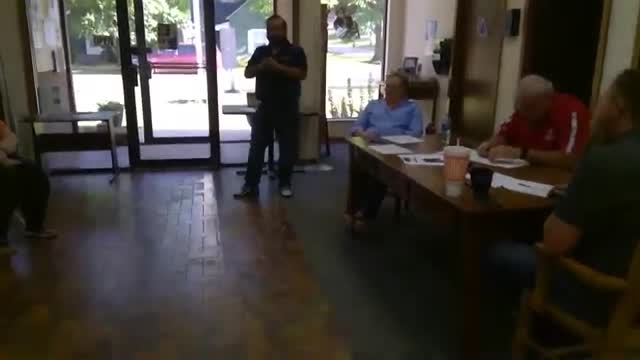Broadband battle intensifies as funding challenges persist
June 21, 2024 | Coyle, Logan County, Oklahoma

This article was created by AI summarizing key points discussed. AI makes mistakes, so for full details and context, please refer to the video of the full meeting. Please report any errors so we can fix them. Report an error »

In a recent government meeting, officials discussed the ongoing challenges and developments in expanding broadband access in Oklahoma, particularly in the town of Coel. Despite securing funding from the Oklahoma Broadband Office for some locations, officials noted that several areas remain unserved due to competitive challenges from existing broadband companies.
Jason, a key participant in the discussions, highlighted the complexities of the funding process, mentioning that some companies have issued blanket challenges to prevent others from receiving financial support for broadband expansion. This tactic has left certain areas without adequate service, as companies aim to maintain their market dominance.
The meeting revealed that while some funding has been awarded, the actual disbursement of these funds is still pending, with expectations set for mid to late 2025 for construction to begin. Currently, the only broadband service available in Coel is from AT&T, which does not meet federal broadband standards.
Officials also discussed the Federal Communications Commission (FCC) mapping system, which identifies unserved areas but has been criticized for inaccuracies. Participants expressed concerns that the mapping process could overlook certain streets or homes, complicating efforts to secure funding for those locations.
Looking ahead, Oklahoma has three broadband funding programs, with the second program set to open soon, offering $159 million. The third program, the largest, will provide $797 million and is expected to launch in 2025. Officials expressed optimism about winning funding for additional locations in Coel during the upcoming application rounds.
Residents were encouraged to stay informed and participate in the challenge process for the FCC maps, which could impact future funding opportunities. Plans for offering broadband services include two pricing tiers: 100 Mbps for $1.55 and 1 Gbps for $1.85, with potential for additional options in the future.
The meeting underscored the ongoing efforts to enhance broadband access in underserved areas, emphasizing the importance of community involvement and accurate mapping in securing necessary funding.
Jason, a key participant in the discussions, highlighted the complexities of the funding process, mentioning that some companies have issued blanket challenges to prevent others from receiving financial support for broadband expansion. This tactic has left certain areas without adequate service, as companies aim to maintain their market dominance.
The meeting revealed that while some funding has been awarded, the actual disbursement of these funds is still pending, with expectations set for mid to late 2025 for construction to begin. Currently, the only broadband service available in Coel is from AT&T, which does not meet federal broadband standards.
Officials also discussed the Federal Communications Commission (FCC) mapping system, which identifies unserved areas but has been criticized for inaccuracies. Participants expressed concerns that the mapping process could overlook certain streets or homes, complicating efforts to secure funding for those locations.
Looking ahead, Oklahoma has three broadband funding programs, with the second program set to open soon, offering $159 million. The third program, the largest, will provide $797 million and is expected to launch in 2025. Officials expressed optimism about winning funding for additional locations in Coel during the upcoming application rounds.
Residents were encouraged to stay informed and participate in the challenge process for the FCC maps, which could impact future funding opportunities. Plans for offering broadband services include two pricing tiers: 100 Mbps for $1.55 and 1 Gbps for $1.85, with potential for additional options in the future.
The meeting underscored the ongoing efforts to enhance broadband access in underserved areas, emphasizing the importance of community involvement and accurate mapping in securing necessary funding.
View full meeting
This article is based on a recent meeting—watch the full video and explore the complete transcript for deeper insights into the discussion.
View full meeting
